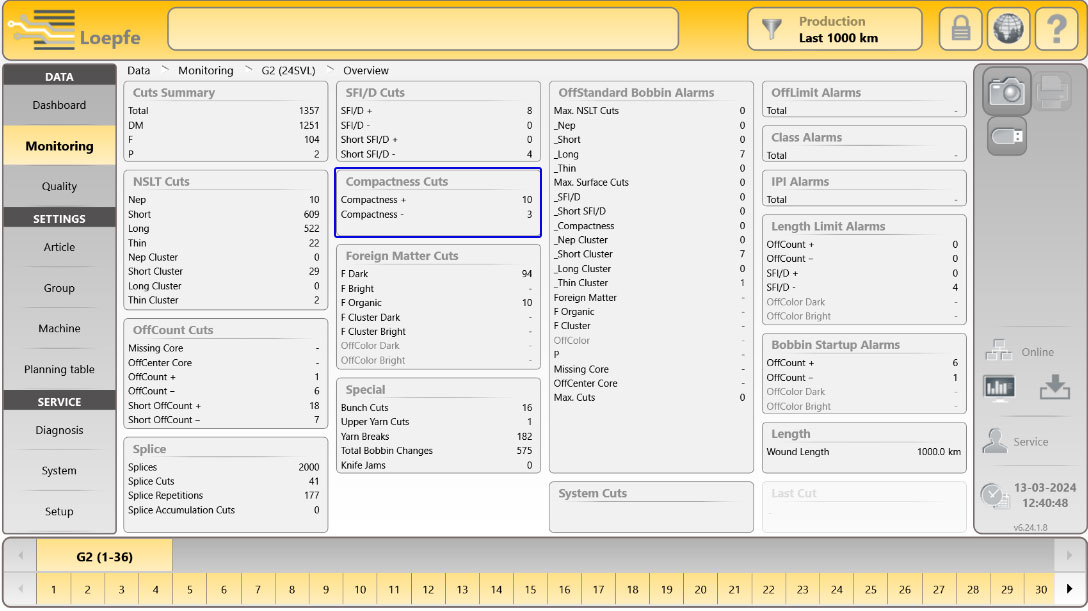YarnMaster® PRISMA releases its Compactness feature, which empowers precision in yarn compactness monitoring.
TW Special Report
The Compactness feature is poised to become an essential tool in the world of compact yarn spinning. Designed with PRISMA’s signature cleverness, the Compactness feature brings unmatched precision in detecting longer faults, twist deviations, hairiness, and compactness differences. But that’s not all — PRISMA’s focus on minimizing waste and optimizing raw material utilization is at the forefront with the Compactness feature. By precisely eliminating detected twist errors throughout their length, unnecessary yarn waste is significantly reduced, leading to better efficiency and cost savings.
By integrating the Compactness feature, every spinner gain the remarkable capability to swiftly detect even the subtlest twist variations. This empowers them to maintain consistent yarn quality and avoid costly complaints due to yarn breaks for example during the weaving process, while also identifying and addressing the sources in previous process steps.
Compactness, in the context of yarn, refers to the tightness and uniformity of fibers within the yarn structure. PRISMA’s simultaneous dual measurement technique provides precise data on mass and diameter across every inch of the yarn, ensuring reliable results about any compactness issues and the successful production of various types of compact or conventional yarns.
Origin of compactness faults:
- Mix-up of bobbins with different twist coming from the ring or roving frame (additional details below)
- Mix-up compacted and non-compacted yarn (additional details below)
- Bobbins with faults from the compacting system from the ring frame (higher hairiness, lower compacting) (additional details below)
- Bobbins with faults from the ring-traveler system of the ring frame (twist reduction) or faults due to fiber accumulation between spindle and belt-drive
- Mix-up of bobbins from combed or carded process
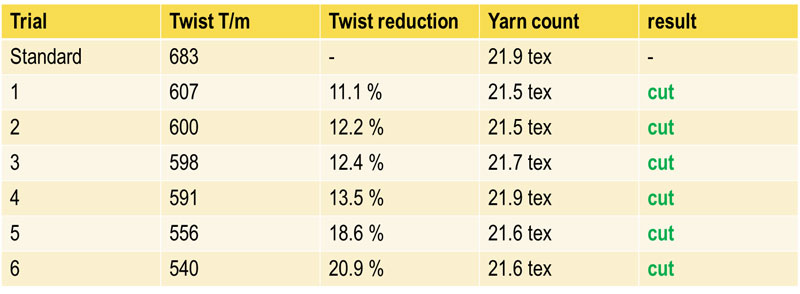 Field Study Results
Field Study Results
PRISMA demonstrates its superiority in precision and efficiency, surpassing other systems in performance.
Client Feedback from Vietnam after implementing the Compactness feature: PRISMA tests on compact siro yarn Ne 27 with a standard twist of 683 T/m.
1. Mix-up of bobbins with different twist coming from the ring or roving frame
When there is a change in the amount of twist, the compactness of the yarn is affected.
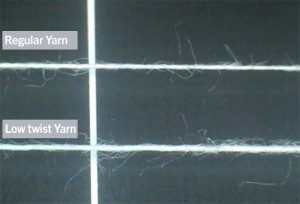 Low twist: A low twist leads to less control over fibers in the yarn structure, resulting in fluffier yarn and a drop in yarn strength. It will be detected in the compactness positive limit.
Low twist: A low twist leads to less control over fibers in the yarn structure, resulting in fluffier yarn and a drop in yarn strength. It will be detected in the compactness positive limit.
The yarn count of the pictured single yarn is Ne 30. Low twist yarn was detected on the compactness positive side. The low twist portion has increased yarn diameter, and caused a 24-percent drop in strength.
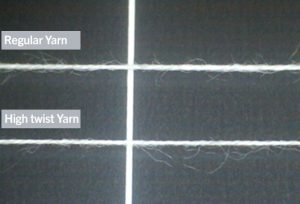 High twist: A higher twist results in increased tightness within the fibers, leading to stiffer yarn and a drop in yarn diameter. This change will be detected in the compactness negative limit.
High twist: A higher twist results in increased tightness within the fibers, leading to stiffer yarn and a drop in yarn diameter. This change will be detected in the compactness negative limit.
The yarn count of the pictured twisted yarn is Ne 54/2 two ply yarn. High twist yarn was detected on the compactness negative side. The high twist portion exhibits a reduced yarn diameter.
2. Mix-up compacted and non-compacted yarn
When there is a mix up of compact and non-compact yarns, it can be observed in the fabric due to different yarn structures. The picture below shows the yarn structure of a twisted compact yarn and a twisted non-compact yarn, both with a count of 50/2 two ply yarn.
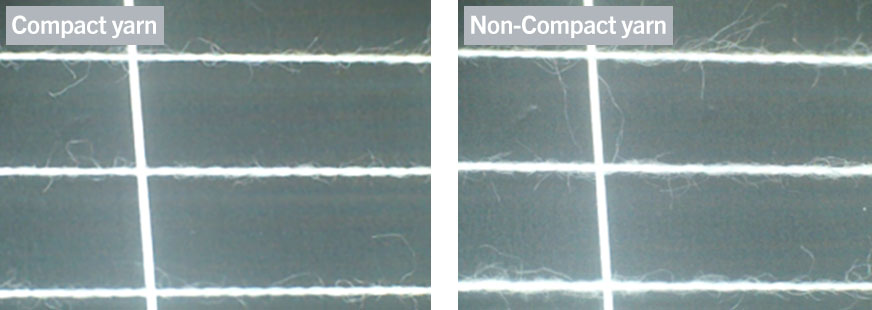
 Detection of a non-compact yarn in a compact yarn clearing
Detection of a non-compact yarn in a compact yarn clearing
Non-compact yarn has more hairiness and a bulkier structure than compact yarn. It can be detected in the compactness positive limit.
 Detection of a compact yarn in a non-compact yarn clearing
Detection of a compact yarn in a non-compact yarn clearing
Compact yarn has lesser hairiness and a smoother surface compared to non-compact yarn. A mix up of compact yarn in non-compact yarn can be detected in the compactness negative limit.
 3. Bobbins with faults from the compacting system from the ring frame (higher hairiness, lower compacting)
3. Bobbins with faults from the compacting system from the ring frame (higher hairiness, lower compacting)
Compacting systems in spinning often produce faulty yarns due to component failures. These faults can also be detected in the compactness positive limit.
The picture below shows the blackboard appearance of Ne 36, rejected by compactness+.
Compactness Settings
Measurement: Selection “DM” uses the combination of both M and D signals for compactness. “D” exclusively relies on the diameter signal for compactness.
Limits: The positive and negative limits have a range of 1% to 150% and -1.0 to -60 % respectively.
Obs. Length: Length ranges from 0.2 m to 50 m.
Working principle and setting guide: The system triggers a cut at a set observation length once the limit exceeds for the entire set observation length. The user can start with the limits of +/- 10% and 10 m obs. length and then optimize until the desired results are achieved.
Alarm limit: The alarm limit for compactness can be set in the Off-Standard menu.
Monitoring data: Compactness + and – cuts will be monitored in the monitoring data.
June 24, 2024

